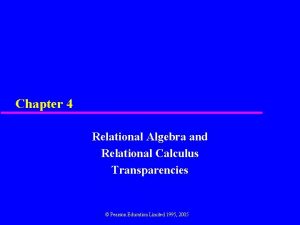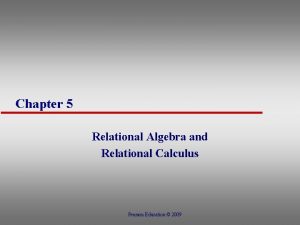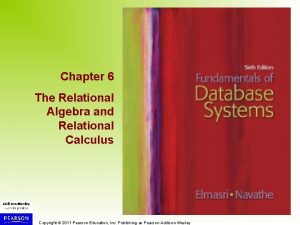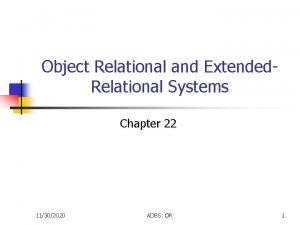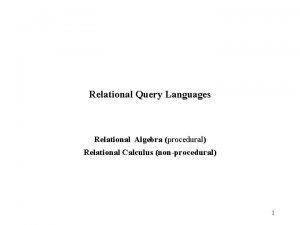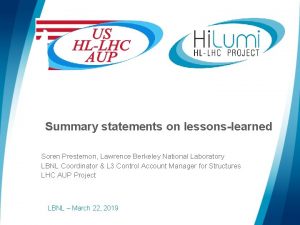Philosophy 224 Kierkegaard and the Relational Self Soren








- Slides: 8

Philosophy 224 Kierkegaard and the Relational Self

Soren Kierkegaard (1813 -55) �Kierkegaard spent the majority of his life in his hometown of Copenhagen. �Despite this provincialism, his impact on the history of philosophy and religion was profound. �An important fideist, he is also often pointed to as a precursor of existentialism. �The connection between these two aspects of his thinking is crucial to understanding his account of the self.

The Sickness unto Death Kierkegaard published The Sickness unto Death in 1849 under the pseudonym Anti. Climacus, the ‘author’ of his most important ethico-religious texts. • Kierkegaard used the pseudonym to point to what he considered to be an ideal Christianity, an ideal he could not represent in himself (and thus in his own name). • The sickness in question (and thus the target of this ideal Christianity) is despair. •

The Relational Self �Kierkegaard defines the self or person as a type of relation. Following the moderns, the type of relation that Kierkegaard highlights is selfrelation, “The self is a relation that relates itself to itself in the relation…” (224). �Upon consideration of the ground of this selfrelation (how it is established), Kierkegaard identifies two possibilities: self-grounding and other-grounding.

3 Forms of Despair � As a result, we can identify three forms of despair (only two of which are despair in the complete sense). ◦ ◦ ◦ The first (limited) form of despair is ignorance of oneself, which is to say failing to recognize that one is in despair. The second (first complete form) is a will to self -destruction. To seek in despair to end it. The third, truest and most authentic form of despair is to will oneself as despairing (“in despair to will to be oneself”).

Relational Self is a Despairing Self Why does the account of the relational self in terms of its ground lead us to an analysis of forms of despair? � For Kierkegaard, the person is suspended between the finite and the infinite. � The two possible form of grounding refer to which of these terms the self recognizes themselves in. � Overcoming despair requires that one commit themselves without remainder to the infinite. � ◦ This is Kierkegaard’s definition of a true Christian.

Way to God is Through Despair One question Kierkegaard must address concerns the value of despair. � We usually see despair as a bad thing, and Kierkegaard agrees that inasmuch as despair is suffering, it is bad. � But, inasmuch as it is only in despair that we are aware of ourselves as a self, and thus aware of our potential relatedness to God, despair is thus good. �

Soren Speaks � “No matter how much the despairing person avoids it, no matter how successfully he has completely lost himself…eternity nevertheless will make it manifest that his condition was despair and will nail him to himself so that his torment will be that he cannot rid himself of his self…Eternity is obliged to do this, because to have a self, to be a self, is the greatest concession, an infinite concession, given to man, but it is also eternity’s claim upon him” (231).
